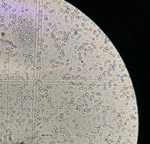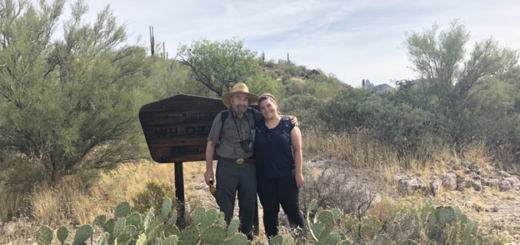Studying social insects in the age of integrative Omics

With the technology for sequencing DNA getting cheaper and more accurate, researchers studying the curious lives of social insects – most ants, some bees, and some wasps – can now reveal the molecular underpinnings of social insect evolution in great detail. Here, we report a brief Q&A interview with the speakers and organizers of a recent symposium organized in 2022 at the annual Entomological Society of America, which was hosted in Vancouver, British Columbia, Canada. The symposium, “Inspirational Advances in Social Insect Evolution via Integrative Omics Approach,” was organized by Hongmei Li-Byarlay, Associate Professor at Central State University in the USA, and Sandra Rehan, Associate Professor at York University in Canada. It was especially refreshing to see a thoughtfully organized symposium that listed invited speakers from multiple career stages, including graduate students, and which maintained gender parity.
An Interview compiled by Biplabendu (Billu) Das, edited by Gaurav Agavekar, Patrick Krapf, James Trager

Organizers’ motivation for the symposium: “Social insect societies exhibit such complex behaviors. Studies of sociality in diverse insect models using new omics tools are important to understand the science behind it. Our symposium will inspire entomologists through discussion, presentations, and engaging dialogues. The symposium will explore behavioral studies across taxonomic groups.”
We asked four researchers that presented at the symposium about their motivations for studying social insects using omics tools made available by the advances in sequencing technologies. We also asked about their day-to-day life as a researcher and what lies ahead in their quest to understand the various molecular processes that have shaped the unique biology of social insects. The affiliations of the researchers at the time of the symposium are provided below.
1. Mean dads, mean kids? The epigenetic mechanism underlying paternal inheritance of aggressive behavior in honeybees
Hongmei Li-Byarlay; Associate Professor, Central State University
The [Hongmei] Li-Byarlay group studies behavioral genetics, evolutionary genetics and epigenetics, molecular ecology, and the relationship between genes and behavior in the brain of honeybees. What are the novel and unique molecular and genetic mechanisms underlying different social behavior? We are testing innovative hypotheses using pharmacological, molecular, functional genomics, Next/Third Generation Sequencing, and behavioral tools to discover the molecular basis of social behavior. In addition, our group also actively conducts applied research on biotic (such as viral infections) and abiotic stressors (such as pesticides and landscapes) affecting the health, behavior, and development of honeybees and wild pollinators. Current research focuses are 1) genomic and epigenomic bases of aggression and defensive behavior, 2) breeding and selection of Ohio biters 1 (OB1) [a breeding stock of honeybees] with high grooming and biting behavior against parasitic mites and behavioral resistance, 3) Oxidative stress and aging of honeybees, 4) queen development and quality, and 5) abiotic and biotic stress of pollinators in different landscapes and farm settings.
The omics tools are new and robust to investigate many genes at the same time, with new technologies developed every year in the last decade. These omics tools can help to ask and answer questions in social evolution, the genetic and epigenetic mechanisms behind phenotypic plasticity, and how the environment affects different divisions of labor with quite different phenotypes and physiology. We are excited to work on new hypotheses of how paternal and maternal-specific genes can affect the aggression behavior in honeybees using reciprocal crosses. These genes are potentially new imprinting genes in honeybees and provide new insights into social evolution.
2. Innate immune system components reduce infection intensity and prevalence of Nosema in the honeybee Apis mellifera
Jessica Webb, PhD candidate, University of California, Riverside

One parasite that honeybees contract is Nosema ceranae (Fig. 1), a global fungal threat to honeybees. Unlike other species of Nosema, N. ceranae suppresses the bee’s immune system resulting in an inability to combat infections efficiently, and also impacts the bee’s ability to deal with other environmental stressors. Given that N. ceranae plays a role in triggering colony collapses, a better understanding of honeybees’ natural defense mechanisms to combat infection would be a major breakthrough in developing new management tools for beekeepers in the future and minimizing further losses. For my PhD research, I am taking a novel approach by exploiting the natural immune defenses of honeybees to develop a novel medication for Nosema by exploring the metabolome of honeybee seminal fluid to confirm antifungal metabolites that can reduce the infectivity of N. ceranae.

While N. ceranae is typically spread through activities such as foraging on flowers, grooming, or ingesting contaminated foods, it has also been found in the ejaculate of honeybees. It can thus be a sexually transmitted disease. The use of proteomics revealed that seminal fluids contain a range of proteins known for their antimicrobial activity and can kill Nosema spores with high efficacy. Surprisingly, these experiments also revealed that in addition to proteins, metabolites (molecules involved in metabolic function) present in the seminal fluid also impacted Nosema viability to an even higher degree than protein. Using metabolomics, we identified metabolites with antifungal properties, which I am now testing as an oral treatment for Nosema ceranae infections (Fig. 2). We’ve found that even when fed to honeybees orally, these metabolites have the ability to reduce Nosema spore infection intensities.
3. Functional genomics of aggression in Polistes fuscatus paper wasps
Alexander Walton; Postdoc, University of Alberta; awalton@iastate.edu

I am interested in the mechanisms that keep social groups cohesive and cooperative. Polistes paper wasps are a fantastic group of insects to explore these mechanisms because although they form social colonies, their cooperation can be tenuous. Indeed, the members of the colony establish reproductive hierarchies via aggressive contests. I study the genetic and physiological mechanisms that moderate this balance between aggression and cooperation in social insect colonies. I use functional genomics to better understand how genes with ancestral roles in reproduction and nutrient sensing help regulate cooperation and aggression. Specifically, I have employed RNA-interference (RNAi) to knock down the expression of the egg-yolk precursor gene vitellogenin in the head fat body of paper wasps and measured its effect on aggressive behavior. RNAi allows for a temporary and sometimes localized perturbation of gene expression so that its effects on a particular phenotype can be measured. This makes it a powerful tool for studying causal relationships between genes and behavior.
I would like to continue to use RNAi to study behavior in natural and semi-natural contexts. Because RNAi is transient, it is feasible to release treated animals into the wild and study them in their natural context, which makes it especially useful for studying the function of behavior-related genes. I would like to use functional genomics to continue exploring the role of the fat body (specifically, the fat that encases the brain) in regulating behavior, pairing my laboratory studies with gene manipulation of free-flying wild colonies of paper wasps. Additionally, I would like to explore how plastic or rigid paper wasp overwintering behavior is across populations and species. I plan to use comparative transcriptomics and genomics to better understand how sensitivity to winter/spring cues has evolved and been canalized, and how climate change may affect the paper wasp life cycle.
4. Single-step origin of a socially parasitic ant
Waring Trible; Principal Investigator, Harvard University
I’m a research fellow at Harvard, where I run a small group studying the genetics and evolution of ants. I’m particularly interested in using mechanistic approaches – such as molecular and functional genetics – to understand the conserved mechanisms of ant caste development, and the modifications to these mechanisms that have enabled the evolution of novel caste phenotypes – like worker polymorphism and permanently wingless queens.

Sydney Brenner has a quote I quite like (paraphrasing here): “The best analysis of wild-type behavior comes from the isolation and study of mutants that alter it.” I started my career working with Ken Ross, who provided the first detailed characterization of genetic polymorphism in ants. I did my PhD with Daniel Kronauer applying functional and comparative genomics to a new model system – the clonal raider ant [Ooceraea biroi]. In my research, I apply the insights I learned from these two extraordinary scientists and mentors to identify genetic loci that underpin the core evolutionary features of ants. In the clonal raider ant, this takes the form of engineering mutants using CRISPR and identifying natural mutants that have arisen spontaneously (then identifying the causal mutation). We are also working on other systems – such as ants in the genus Leptothorax –to identify and characterize genetic polymorphisms in wild populations.
When I started my PhD, researchers studying the genetics of ants had identified fewer Mendelian elements regulating ant phenotypes than Gregor Mendel had found in peas before 1865! This is largely because of the great difficulty of performing laboratory crosses in most ant species. A decade later, things are very different – comparative genomics allows us to sidestep this limitation using whole-genome sequencing of individuals that vary in phenotypes of interest. In particular, my group has been working on characterizing the first genetic elements known to affect the mechanisms of caste development – we have one that affects the process of caste determination, and a different one that affects the process of caste differentiation. Our hope is that these approaches will allow us to identify whole swaths of new molecular mechanisms that underpin the rich evolutionary novelties of ants and subsequent phenotypic diversification.





Recent Comments